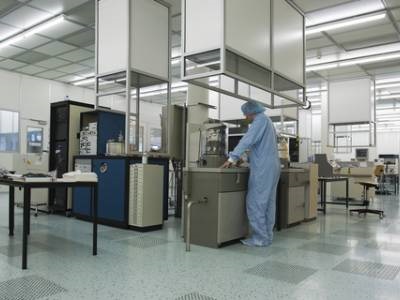
Despite best efforts to keep cleanrooms free from contamination, it can happen. This can stem from negligence in cleaning, poor maintenance of biosafety cabinets (BSCs) and other workflow cabinets in the cleanroom, as well as contamination from outside of the room if the materials brought in are unclassified. Here are potential sources of contamination in your cleanroom, and how best to avoid them.
1. Personnel
By far the most common source of contamination in a cleanroom is the human personnel inside it. In fact, human beings account for over 80% of the contaminants found in these areas. Much of this contamination happens without any effort on our part, as we typically shed about one billion skin cells every day.1 Cosmetics, deodorants, perfumes, and lotions also contribute significantly to the presence of particles in the air. Another big cause of cleanroom contamination is clothing worn by personnel—fabrics that are prone to linting create a hazard in these highly sensitive environments.
2. Biosafety Cabinets
If you’re handling hazardous biomaterials but don’t have the right class of BSC for your research, it’s possible your cleanroom could become contaminated. Be sure to complete a risk assessment and consult guidelines for specific pathogens to ensure you are performing experiments in the correct type of BSC. BSCs, fume hoods and other containment workspaces filter out harmful particulate. Some of these recirculate the air back into the cabinet while others exhaust the air outside. If you don’t have the correct type of exhaust/filtration mechanism fitted for the cleanroom, or an optimally working motor, then there’s the potential for any of the removed constituents from the workspace to be transferred around the lab. Likewise, if you don’t change the HEPA filters regularly, they will become blocked and disrupt the laminar airflow, potentially letting particulate matter back into the lab.
3. Sinks
Ironically, sinks used to maintain proper hygiene practices in cleanrooms are also common sources of aerosolized contaminants. Sinks should be not located near any doors. Additionally, the room’s vent intake should be located directly over/near the sink to capture any splashing that may occur during even the most careful of hand washing procedures.
4. Office Accessories
Cleanroom technicians can be tempted to bring their own pencils or pens into the area. The problem with this practice is that these seemingly harmless objects can introduce bacteria into the cleanroom. For example, marker pens sometimes harbor molds, which can spread into the air.
5. Anterooms
The difference in air pressure between the cleanroom and anteroom helps to control airflow and maintain cleanliness. Cleanrooms are held in positive pressure, and the pressure gradient of the clean zone must be greater than the anteroom’s, which, in turn, must be greater than the area outside of the anteroom. The pressure cascade differential will make the air flow out of the cleanroom instead of into it, which prevents particulate matter or unfiltered air from entering.
6. Equipment Exteriors
Be sure to routinely wipe down all exterior surfaces of workstations, such as storage containers, biosafety cabinets, freezers, etc. Pay extra attention to the tops of equipment and other less obvious, hard-to-reach places. Any dust or contamination from this equipment can cause problems inside the cleanroom.